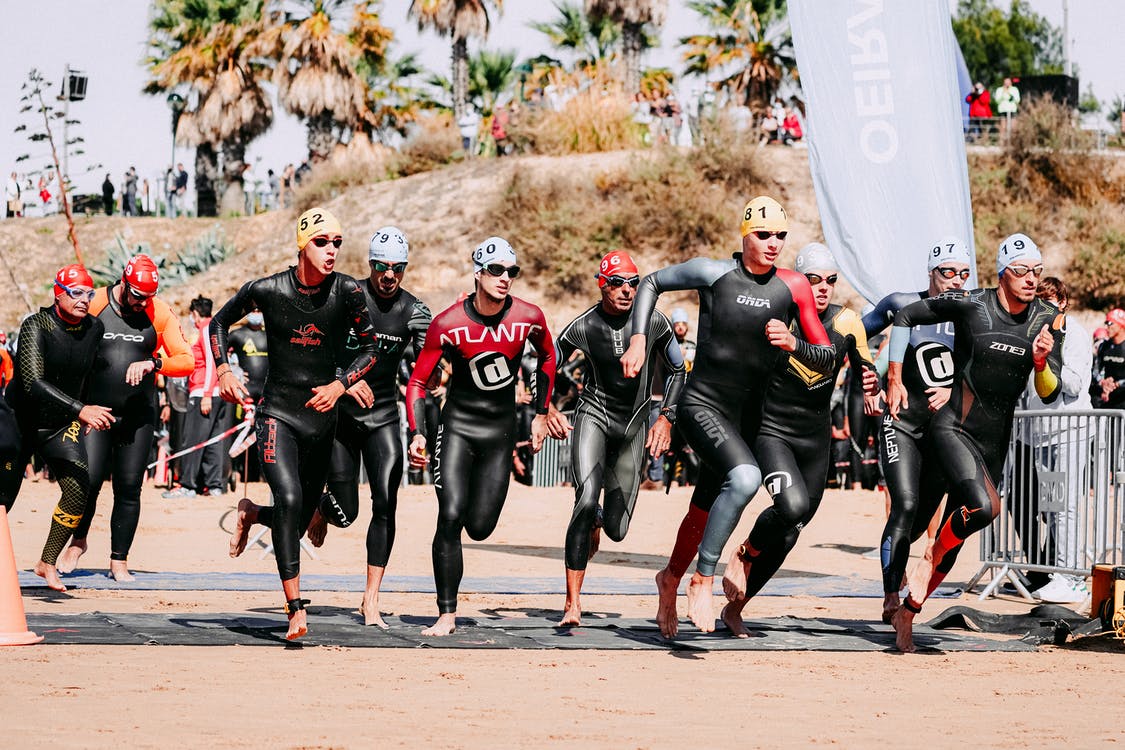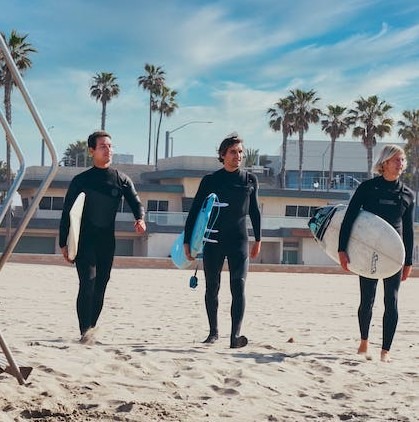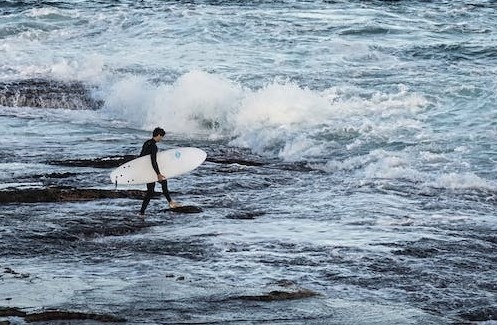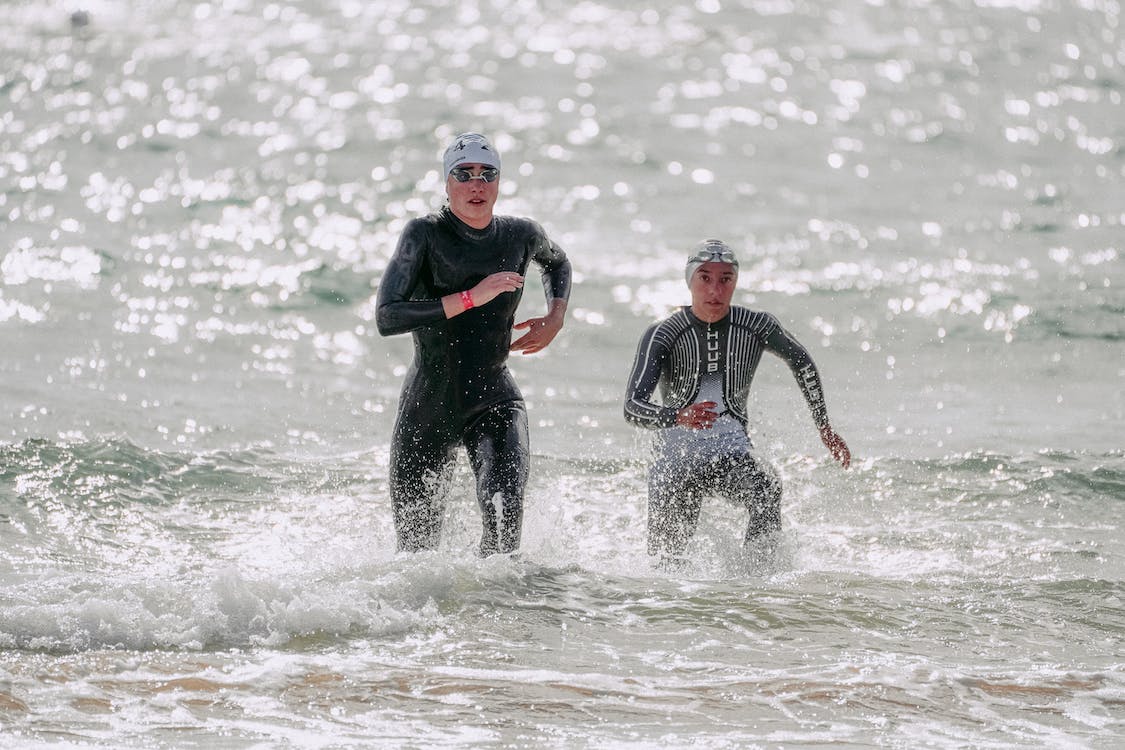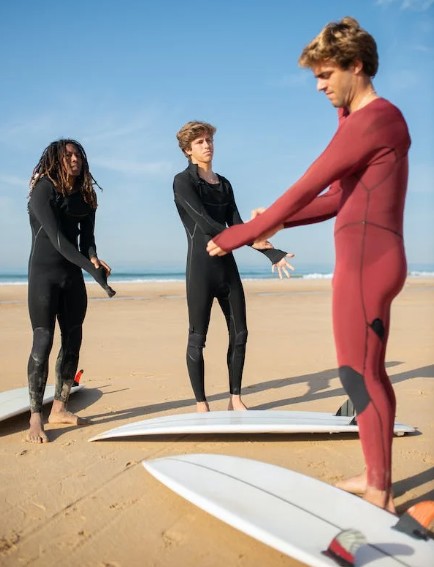Wearing a wetsuit is the best way to stay warm while swimming. A wetsuit regulates your body temperature, which not only keeps you warm but also protects you from hypothermia and other hazards that could occur if you were swimming without one.
However, knowing what type of suit or thickness to choose for different climates or conditions can be difficult. Finding the right wetsuit entails more than just selecting an inexpensive suit that fits snugly. You must also consider the temperature, which is primarily determined by the thickness of the wetsuit.
Why Should Wetsuit Thickness Be Considered?
The main purpose of a wetsuit is to protect your body from various elements such as water, UV rays, sea creatures, and so on. These wetsuits come in a variety of thicknesses. It is important that you keep your core body heat warm while snorkeling or surfing. This heat will aid in the prevention of hypothermia. When the thickness is high, it means that it will provide more warmth to your body but will not provide as much flexibility as thinner ones.
Nowadays, most wetsuits are made of neoprene, which is a very flexible material that feels great against your skin. As a result, it allows you to move your body properly both inside and outside of the water. While thicker neoprene provides more warmth than thinner neoprene, it also provides less flexibility than thinner neoprene. You must now select the appropriate thickness of your wetsuit based on a variety of factors.
Temperature Guidelines for Wetsuits in General
Wetsuit thickness is measured in millimeters and is usually indicated by two or three numbers separated by a slash. The first number represents the thickness of the wetsuit’s neoprene on the torso. The second number indicates the thickness of the neoprene on the legs, and the third indicates the thickness of the neoprene on the arms.
Sometimes there are two numbers separated by a slash instead of three. This still means that the first number represents the torso, and the second represents the extremities as a whole.
The first number is always higher because the torso always gets more neoprene to keep you warm. The core, you see, is crucial in maintaining heat and preventing hypothermia. The second and/or third numbers are typically less thick because you require more movement in the arms and legs because thicker neoprene provides more warmth but less flexibility.
The following is a basic wetsuit thickness guide.
- Water temperature = 40 degrees Fahrenheit; ideal wetsuit thickness = 6/5/4 Sealed
- Water temperature is 48 degrees Fahrenheit; the optimal wetsuit thickness is 5/4/3 sealed
- Water temperature = 52 degrees Fahrenheit; ideal wetsuit thickness = 4/3 Sealed and Taped
- Water temperature = 56 degrees Fahrenheit; ideal wetsuit thickness = 4/3 Sealed
- Water temperature = 60 degrees Fahrenheit; ideal wetsuit thickness = 3/2 Sealed
- Water temperature = 65 degrees Fahrenheit; ideal wetsuit thickness = 4/3 flatlock
- Water temperature = 72 degrees Fahrenheit; ideal wetsuit thickness = Spring Suit
- Water Temperature of 80°F or higher; Probably Not Required
Temperatures of the Water
Water temperatures vary in different open water swim locations around the world. Water temperatures in seas differ from those in lakes, with sea water typically being warmer, and even within the same body of water at different times of the year.
Here’s our handy guide to water temperature ranges, what to expect, and how to prepare for swimming in them.
What to Expect from the Water Temperature?
- Temperatures above 26°C (79°F)
Very warm open water temperatures that are common in the Caribbean, as well as the Middle East and the warmest parts of the Mediterranean during the summer. Temperatures will be comparable to a heated pool. Swimming in a wetsuit is not recommended in these temperatures due to the risk of overheating. To avoid dehydration, drink frequently while swimming.
- 22 – 25°C (72 – 77°F)
Ideal open water swimming temperatures are frequently found in the Mediterranean during the summer months. Most swimmers will be fine without a wetsuit and will be able to swim for as long as they want.
- 17 – 21°C (63 – 70°F)
Pleasant swimming temperatures, with the lower end of this category typically representing the peak of summer water temperatures in the UK. Some people who are more susceptible to cold weather may still want to wear a wetsuit.
- 12 – 16°C (54 – 61°F)
These temperatures are typically found at the start and end of the summer season. Swimming for longer periods of time with comfortable skins is still possible for those accustomed to slightly cooler waters. Swimming in sub-16-degree water is frequently used to establish qualifying times for channel swims and other long-distance events.
- 6 – 11°C (43 – 52°F)
As we approach single digits, these are the temperatures you’ll encounter as autumn gives way to winter. Most swimmers will require a wetsuit to be able to swim for any length of time, as well as gloves or a neoprene hat to keep their extremities warm.
- 1 – 5°C (34 – 41°F)
Water that is extremely cold. Swimming in temperatures below 5 degrees Celsius is considered ice swimming. Swim times should be kept to less than ten minutes, and only if you are acclimatized.
- Temperatures below 0°C (32°F)
Sub-zero temperatures are rarely encountered by the truly brave, and even a brief dip should be considered only after extensive acclimatization.
To sum it up
With the help of our comprehensive wetsuit water temperature and thickness guide, you should be able to pick a wetsuit that is suitable for your needs. When shopping for a wetsuit, you should be sure to pick one that is composed of a high-quality material. Neoprene, which is capable of withstanding sunshine, weather, and a number of other elements, is the material that should be selected if at all possible. Additionally, it can provide you with a high degree of flexibility while still offering you adequate protection from the water. In contrast to the other material, you will still have some flexibility even when wearing a wetsuit made entirely of neoprene, even if it is the thickest one. In addition to this, neoprene is significantly more long-lasting and resistant to tears and wear and tear. The only thing left for you to do is use the guidance that was just provided to select the appropriate thickness and type of wetsuit for your water sport activity, and then choose the ideal wetsuit for your experience.

